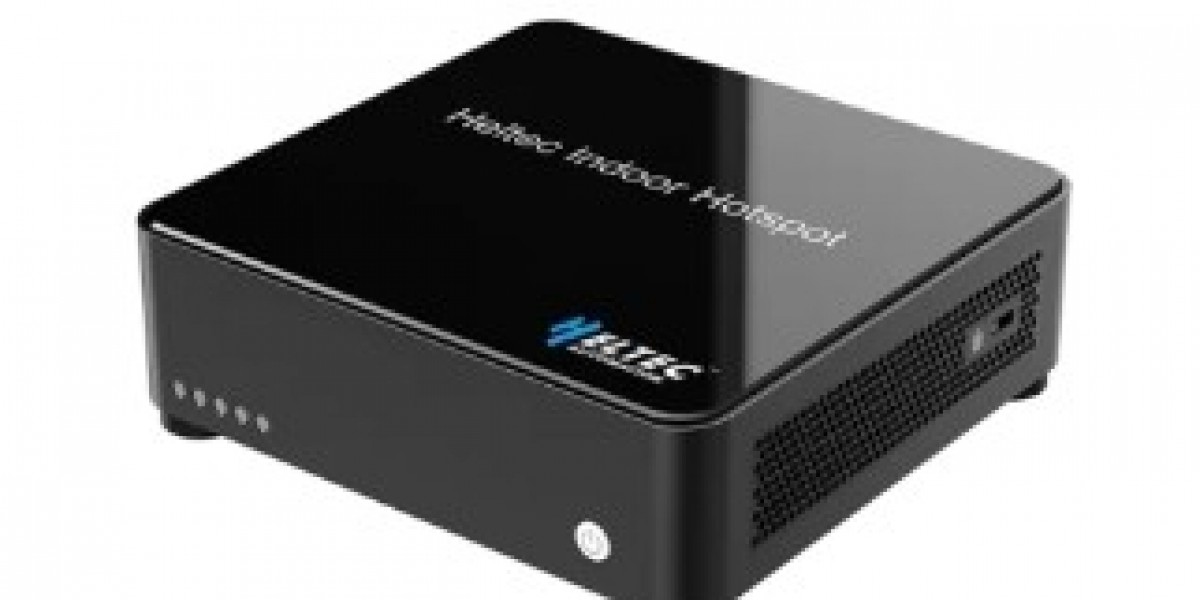Welcome to Gongyuan Automation Technology's blog! Today, we're diving into the world of electrical safety and discussing an essential component that often goes underappreciated -insulation monitoring devices (IMDs).Whether you're a seasoned electrician or a curious homeowner looking to enhance the safety of your electrical systems, this article will provide valuable insights into why IMDs are crucial for maintaining a secure environment. So let's shed some light on these unsung heroes and discover how they play an indispensable role in keeping us safe from potential hazards.
Understanding Insulation Monitoring Devices (IMDs)
Insulation is a critical aspect of electrical systems that often goes unnoticed until something goes wrong. IMDs are designed to monitor the insulation resistance in these systems, ensuring early detection of any faults or deteriorations before they escalate into potentially dangerous situations.
So, what exactly are IMDs? Simply put, they are specialized devices that constantly monitor the integrity of electrical insulation. By measuring and analyzing parameters like leakage current and insulation resistance, IMDs provide real-time information about the condition of the system's insulation.
These devices act as vigilant guardians, continuously evaluating the quality of insulation and alerting us if there is a potential risk. They help identify issues such as moisture ingress, aging cables, or faulty connections that can compromise safety and lead to electrical failures or even fires.
One key feature of IMDs is their ability to detect earth faults. Electrical systems with proper grounding are essential for protecting against electric shocks and maintaining overall system stability. When an earth fault occurs due to damaged insulation or other factors, it can disrupt this balance and pose significant risks. However, IMDs quickly detect these faults by monitoring changes in impedance levels between live conductors and ground.
Moreover, IMDs have the capability to measure important electrical parameters such as voltage levels and frequency variations within an installation accurately. This information provides valuable insights into power quality issues that may affect equipment performance or cause unwanted disruptions.
Understanding how IMDs function enables us to appreciate their significance in maintaining safe electrical environments. These devices not only offer continuous monitoring but also provide timely alerts when deviations occur - allowing for swift action before any potential hazards arise. So let's explore further how different types of IMDs work and why incorporating them into your electrical systems is crucial for enhanced safety!
The Role of IMDs in Electrical Safety
Insulation Monitoring Devices (IMDs) play a crucial role in ensuring electrical safety in various industries and settings. These devices are designed to continuously monitor the insulation resistance of electrical systems, alerting users to any potential faults or deterioration that could lead to hazardous conditions.
By monitoring the insulation resistance, IMDs help detect early signs of insulation breakdown or leakage current, which can indicate impending equipment failure or even electrical shock risks. This proactive approach allows for timely maintenance and repairs before accidents occur.
IMDs come in different types, ranging from basic standalone units to more advanced networked systems. Regardless of the type, they work by constantly measuring the impedance between conductors and earth. If this impedance falls below a certain threshold or exceeds preset limits, an alarm is triggered to notify operators about potential insulation issues.
The benefits of using an IMD in electrical systems are significant. It minimizes downtime by identifying insulation faults promptly and allowing for immediate action. It enhances safety as it aids in preventing electric shocks and fires caused by faulty insulation. Additionally, IMDs contribute to energy efficiency by optimizing system performance through continuous monitoring.
When selecting the right IMD for your specific application or system, consider factors such as voltage levels, desired response time, communication capabilities with other equipment/devices on your network (if applicable), and compliance with relevant standards/regulations.
In conclusion, Insulation Monitoring Devices (IMDs) play a vital role in maintaining electrical safety by monitoring the integrity of insulation within electrical systems. By detecting early warning signs of deteriorating insulation or leakage currents that could result in dangerous situations like electric shocks or fires if left unaddressed.
Choosing the appropriate IMD based on factors like voltage levels, response time requirements, and compliance with regulations will ensure optimal protection for your system. With their ability to minimize downtime, enhance safety measures and improve energy efficiency, it's clear why incorporating an IMD into your electrical setup is essential. Investing in these devices will not only protect your equipment and personnel but also provide peace of
Types of IMDs and How They Work
Insulation Monitoring Devices (IMDs) play a crucial role in ensuring the safety and efficiency of electrical systems. These devices are designed to monitor the insulation resistance between live conductors and earth, detecting any potential faults or deteriorations.
There are different types of IMDs available in the market, each with its own unique features and functionalities. One common type is the continuous monitoring IMD, which constantly measures the insulation resistance during normal operation. This ensures that any changes or anomalies can be detected promptly.
Another type is the periodic monitoring IMD, which conducts insulation tests at specified intervals. This allows for regular checks on the integrity of electrical insulation without interrupting system operation.
IMDs typically work by applying a low voltage AC signal to measure the impedance between conductors and earth. By comparing this impedance value against pre-set thresholds, they can determine if there is adequate insulation or if a fault condition exists.
Some advanced IMDs also offer additional features like temperature compensation, ground-fault detection, and remote monitoring capabilities. These added functionalities further enhance their effectiveness in maintaining electrical safety.
Choosing the right type of IMD for your system depends on various factors such as system size, complexity, criticality, and budget constraints. It's important to consider these aspects while selecting an appropriate device that meets your specific requirements.
In conclusion [not conclusive], Insulation Monitoring Devices are vital components for ensuring electrical safety by continuously monitoring insulation resistance levels in electrical systems. Understanding different types of IMDs and how they work will help you make informed decisions when it comes to choosing one for your system's needs
Benefits of Using an IMD in Electrical Systems
Insulation Monitoring Devices (IMDs) play a crucial role in ensuring the safety and reliability of electrical systems. By continuously monitoring the insulation resistance between live conductors and earth, IMDs can detect any deterioration or faults in the system's insulation before they lead to serious accidents or equipment damage.
One of the key benefits of using an IMD is early detection. By promptly identifying insulation faults such as leaks or breakdowns, IMDs enable maintenance personnel to take immediate action, preventing potential hazards and minimizing downtime. This proactive approach can significantly reduce the risk of electrical fires and electrocution incidents.
Moreover, IMDs provide real-time monitoring and alarm systems that quickly alert operators when there are deviations from acceptable levels of insulation resistance. These warnings allow for timely investigations into the root cause of the fault, enabling prompt repairs or replacements to be carried out.
Another advantage is that some IMDs offer remote monitoring capabilities, allowing operators to access critical data from anywhere at any time. This feature enhances convenience and enables swift response times even if personnel are not physically present on-site.
Furthermore, by implementing an effective insulation monitoring system with appropriate alarms and continuous monitoring features, businesses can comply with regulatory requirements related to electrical safety standards.
Incorporating Insulation Monitoring Devices in electrical systems offers numerous advantages such as early fault detection, prevention of accidents/damage, remote accessibility for ease-of-use/maintenance purposes etc., making them indispensable components for enhancing overall safety and reliability in today's interconnected world.
How to Choose the Right IMD for Your System
When it comes to choosing the right Insulation Monitoring Device (IMD) for your electrical system, there are several factors to consider. First and foremost, you need to assess the specific needs and requirements of your system. This includes understanding the voltage level, frequency, and type of insulation used.
Next, you should look for an IMD that is compatible with your system's voltage range. Different IMDs are designed for different voltage levels, so it's important to choose one that can accurately monitor the insulation resistance within your desired range.
Additionally, consider the features and capabilities of the IMD. Some devices offer advanced functionalities such as continuous monitoring, fault detection alarms, and remote access options. Evaluate these features based on their relevance to your system's safety requirements.
Furthermore, make sure to select an IMD from a reputable manufacturer or supplier with a proven track record in providing reliable products. Look for certifications and quality standards compliance as indicators of product reliability.
Consider factors such as installation ease and maintenance requirements when choosing an IMD. Opt for a device that is easy to install without requiring extensive modifications or disruptions to your existing electrical setup.
By carefully considering these aspects while selecting an IMD for your system, you can ensure optimal electrical safety and efficient performance.
Conclusion
In today's ever-evolving world, electrical safety is of paramount importance. With the increasing complexity and sensitivity of electrical systems, it becomes crucial to have robust measures in place to ensure their smooth operation and prevent any potential hazards.
Insulation Monitoring Devices (IMDs) play a vital role in enhancing electrical safety by continuously monitoring the insulation resistance in electrical systems. By alerting users of any degradation or faults in the insulation, IMDs enable timely intervention and preventive maintenance, thereby minimizing the risk of accidents, equipment damage, and downtime.
There are various types of IMDs available on the market today, each with its own unique features and capabilities. Whether it be an analog or digital device, portable or fixed installation unit, choosing the right IMD for your system depends on several factors such as system size, voltage levels, monitoring requirements, and budget constraints.
By investing in a reliable IMD from reputable manufacturers like Gongyuan Automation Technology , you can benefit from features such as real-time data monitoring through advanced communication interfaces like Modbus or Ethernet connections. These devices also provide comprehensive fault diagnostics and historical data logging for analysis purposes.
The benefits of using an IMD extend beyond just ensuring electrical safety. They contribute to increased operational efficiency by reducing unplanned downtime due to unexpected failures. Additionally, they help optimize maintenance schedules by highlighting when insulation resistance starts deteriorating so that proactive actions can be taken before serious issues arise.
In conclusion , Insulation Monitoring Devices are indispensable tools for maintaining safe and reliable electrical systems. As technology continues to advance at a rapid pace and our reliance on electricity grows stronger every day,it is imperative that we prioritize safety above all else. Incorporating an effective insulation monitoring solution not only protects lives but also safeguards valuable assets while ensuring uninterrupted operations.
So choose wisely,don't compromise on quality,and let Gongyuan Automation Technology empower you with cutting-edge solutions for your electrical safety needs!






